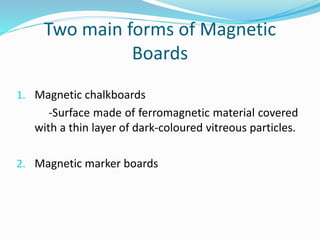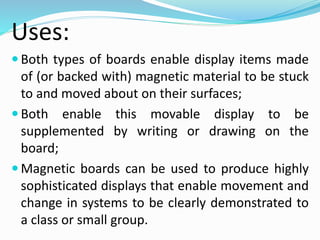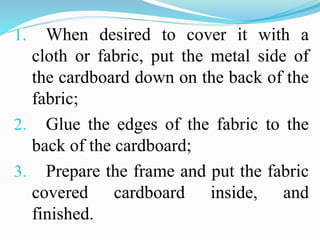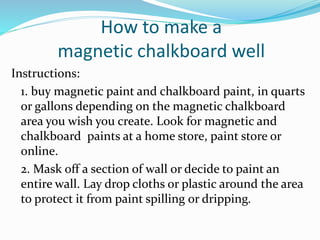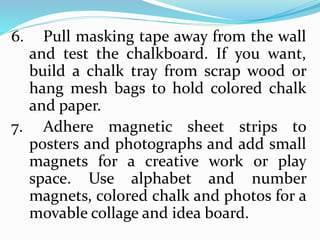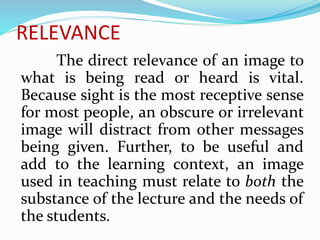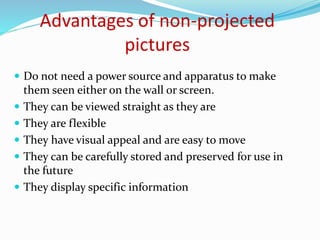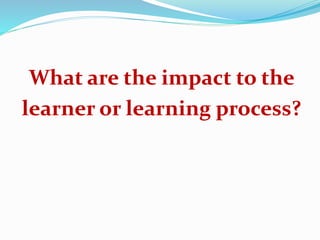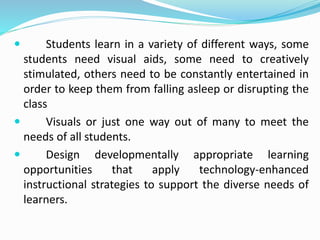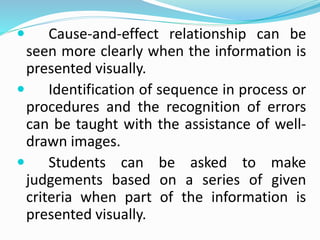Magnetic boards are surfaces that allow writing or drawing using magnetic markers or pens. There are two main types - magnetic chalkboards with a ferromagnetic surface and dark coating, and magnetic marker boards with a light colored silk or gloss coating. Both types allow movable displays using magnetic materials and supplementation with writing. Magnetic boards can be used to clearly demonstrate systems. Non-projected pictures are study prints, charts, maps and illustrations not requiring projection. They motivate students, present concepts visually and stimulate thinking. Preparation involves selecting relevant images, ensuring clarity, and meeting student needs.

